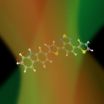(Press-News.org) The simpler, the more heat-resistant – scientists uncover the key to adaptation limits of ocean dwellers
Bremerhaven, Germany, 1 July 2014. The simpler a marine organism is structured, the better it is suited for survival during climate change. Scientists of the Alfred Wegener Institute, Helmholtz Centre for Polar and Marine Research discovered this in a new meta-study, which appears today in the research journal Global Change Biology. For the first time biologists studied the relationship between the complexity of life forms and the ultimate limits of their adaptation to a warmer climate. While unicellular bacteria and archaea are able to live even in hot, oxygen-deficient water, marine creatures with a more complex structure, such as animals and plants, reach their growth limits at a water temperature of 41 degrees Celsius. This temperature threshold seems to be insurmountable for their highly developed metabolic systems.
The current IPCC Assessment Report shows that marine life forms respond very differently to the increasing water temperature and the decreasing oxygen content of the ocean. "We now asked ourselves why this is so. Why do bacteria, for example, still grow at temperatures of up to 90 degrees Celsius, while animals and plants reach their limits at the latest at a temperature of 41 degrees Celsius," says Dr. Daniela Storch, biologist in the Ecophysiology Department at the Alfred Wegener Institute (AWI) and first author of the current study.
Since years Storch and her colleagues have been investigating the processes that result in animals having a certain temperature threshold up to which they can develop and reproduce. The scientists found that the reason for this is their cardiovascular system. They were able to show in laboratory experiments that this transport system is the first to fail in warmer water. Blood circulation supplies all cells and organs of a living organism with oxygen, but can only do so up to a certain maximum temperature. Beyond this threshold, the transport capacity of this system is no longer sufficient; the animal can then only sustain performance for a short time. Based on this, the biologists had suspected at an early date that there is a relationship between the complex structure of an organism and its limited ability to continue to function in increasingly warm water.
"In our study, therefore, we examined the hypothesis that the complexity could be the key that determines the ultimate adaptability of diverse life forms, from marine archaea to animals, to different living conditions in the course of evolutionary history. That means: the simpler the structure of an organism, the more resistant it should be," explains the biologist. If this assumption is true, life forms consisting of a single simply structured cell would be much more resistant to high temperatures than life forms whose cell is very complex, such as algae, or whose bodies consist of millions of cells. Hence, the tolerance and adaptability thresholds of an organism type would always be found at its highest level of complexity. Among the smallest organisms, unicellular algae are the least resistant because they have highly complex cell organelles such as chloroplasts for photosynthesis. Unicellular protozoans also have cell organelles, but they are simpler in their structure. Bacteria and archaea entirely lack these organelles.
To test this assumption, the scientists evaluated over 1000 studies on the adaptability of marine life forms. Starting with simple archaea lacking a nucleus, bacteria and unicellular algae right through to animals and plants, they found the species in each case with the highest temperature tolerance within their group and determined their complexity. In the end, it became apparent that the assumed functional principle seems to apply: the simpler the structure, the more heat-tolerant the organism type.
But: "The adaptation limit of an organism is not only dependent on its upper temperature threshold, but also on its ability to cope with small amounts of oxygen. While many of the bacteria and archaea can survive at low oxygen concentrations or even without oxygen, most animals and plants require a higher minimum concentration," explains Dr. Daniela Storch. The majority of the studies examined show that if the oxygen concentration in the water drops below a certain value, the oxygen supply for cells and tissues collapses after a short time.
The new research results also provide evidence that the body size of an organism plays a decisive role concerning adaptation limits. Smaller animal species or smaller individuals of an animal species can survive at lower oxygen concentration levels and higher temperatures than the larger animals.
"We observe among fish in the North Sea that larger individuals of a species are affected first at extreme temperatures. In connection with climate warming, there is generally a trend that smaller species replace larger species in a region. Today, however, plants and animals in the warmest marine environments already live at their tolerance limit and will probably not be able to adapt. If warming continues, they will migrate to cooler areas and there are no other tolerant animal and plant species that could repopulate the deserted habitats," says Prof. Dr. Hans-Otto Pörtner of the Alfred Wegener Institute. The biologist initiated the current study and is the coordinating lead author of the chapter "Ocean systems" in the Fifth Assessment Report.
The new meta-study shows that their complex structure sets tighter limits for multicellular organisms, i.e. animals and plants, within which they can adapt to new living conditions. Individual animal species can reduce their body size, reduce their metabolism or generate more haemoglobin in order to survive in warmer, oxygen-deficient water. However, marine animals and plants are fundamentally not able to survive in conditions exceeding the temperature threshold of 41 degrees Celsius.
In contrast, simple unicellular organisms like bacteria benefit from warmer sea water. They reproduce and spread. "Communities of species in the ocean change as a result of this shift in living conditions. In the future animals and plants will have problems to survive in the warmest marine regions and archaea, bacteria as well as protozoa will spread in these areas. There are already studies showing that unicellular algae will be replaced by other unicellular organisms in the warmest regions of the ocean," says Prof. Dr. Hans-Otto Pörtner. The next step for the authors is addressing the question regarding the role the complexity of species plays for tolerance and adaptation to the third climatic factor in the ocean, i.e. acidification, which is caused by rising carbon dioxide emissions and deposition of this greenhouse gas in seawater.
INFORMATION:
Glossary:
Living at the limit
For generations ocean dwellers have adapted to the conditions in their home waters: to the prevailing temperature, the oxygen concentration and the degree of water acidity. They grow best and live longest under these living conditions. However, not all creatures that live together in an ecosystem have the same preferences. The Antarctic eelpout, for instance, lives at its lower temperature limit and has to remain in warmer water layers of the Southern Ocean. If it enters cold water, the temperature quickly becomes too cold for it. The Atlantic cod in the North Sea, by contrast, would enjoy colder water as large specimens do not feel comfortable in temperatures over ten degrees Celsius. At such threshold values scientists refer to a temperature window: every poikilothermic ocean dweller has an upper and lower temperature limit at which it can live and grow. These "windows" vary in scope. Species in temperate zones like the North Sea generally have a broader temperature window. This is due to the extensively pronounced seasons in these regions. That means the animals have to withstand both warm summers and cold winters.
The temperature window of living creatures in the tropics or polar regions, in comparison, is two to four times smaller than that of North Sea dwellers. On the other hand, they have adjusted to extreme living conditions. Antarctic icefish species, for example, can live in water as cold as minus 1.8 degrees Celsius. Their blood contains antifreeze proteins. In addition, they can do without haemoglobin because their metabolism is low and a surplus of oxygen is available. For this reason their blood is thinner and the fish need less energy to pump it through the body – a perfect survival strategy. But: icefish live at the limit. If the temperature rises by a few degrees Celsius, the animals quickly reach their limits.
Scientists uncover the key to adaptation limits of ocean dwellers
The simpler, the more heat-resistant
2014-07-01
ELSE PRESS RELEASES FROM THIS DATE:
The biology of addiction risk looks like addiction
2014-07-01
Philadelphia, PA, July 1, 2014 – Research suggests that people at increased risk for developing addiction share many of the same neurobiological signatures of people who have already developed addiction. This similarity is to be expected, as individuals with family members who have struggled with addiction are over-represented in the population of addicted people.
However, a generation of animal research supports the hypothesis that the addiction process changes the brain in ways that converge with the distinctive neurobiology of the heritable risk for addiction. In other ...
In study of individual neuron activity, key brain region responds to subjective perception
2014-07-01
LOS ANGELES (June 30, 2014) – When evaluating another person's emotions – happy, sad, angry, afraid – humans take cues from facial expressions. Neurons in a part of the brain called the amygdala "fire" in response to the visual stimulation as information is processed by the retina, the amygdala and a network of interconnected brain structures. Some of these regions respond just to the actual features of the face, whereas others respond to how things appear to the viewer, but it is unknown where in the brain this difference arises.
Although the amygdala's importance in ...
Up in flames: Evidence confirms combustion theory
2014-07-01
Researchers at the Department of Energy's Lawrence Berkeley National Lab (Berkeley Lab) and the University of Hawaii have uncovered the first step in the process that transforms gas-phase molecules into solid particles like soot and other carbon-based compounds.
The finding could help combustion chemists make more-efficient, less-polluting fuels and help materials scientists fine-tune their carbon nanotubes and graphene sheets for faster, smaller electronics. In addition, the results could have implications for the burgeoning field of astrochemistry, potentially establishing ...
Study finds online bullying creates off-line fear at school
2014-07-01
HUNTSVILLE, TX (7/1/14) -- Cyberbullying creates fear among students about being victimized at school, a recent study by Sam Houston State University found.
While traditional bullying still creates the most fear among students, cyberbullying is a significant factor for fear of victimization at school among students who have experienced bullying or disorder At school, such as the presence of gangs. The fear from cyberbullying is most prominent in minority populations.
"It cannot be overstated – online victimization has offline consequences, and those consequences may ...
Scientists discover how plastic solar panels work
2014-07-01
This news release is available in French.
Scientists don't fully understand how 'plastic' solar panels work, which complicates the improvement of their cost efficiency, thereby blocking the wider use of the technology. However, researchers at the University of Montreal, the Science and Technology Facilities Council, Imperial College London and the University of Cyprus have determined how light beams excite the chemicals in solar panels, enabling them to produce charge. "Our findings are of key importance for a fundamental mechanistic understanding, with molecular ...
Stanford engineers envision an electronic switch just 3 atoms thick
2014-07-01
VIDEO:
This animation shows the three-atom thick crystal being pulled from a non-conductive to conductive state, and then being pushed back to the non-conductive state.
Click here for more information.
Do not fold, spindle or mutilate. Those instructions were once printed on punch cards that fed data to mainframe computers. Today's smart phones process more data, but they still weren't built for being shoved into back pockets.
In the quest to build gadgets that can survive such ...
Updated guidelines covering fusion procedures for degenerative disease of the lumbar spine
2014-07-01
Charlottesville, VA (July 1, 2014). Experts in the spine surgery community—neurosurgeons and orthopedic surgeons—banded together to evaluate the recent literature on lumbar spine fusion procedures and to publish up-to-date evidence-based recommendations on their use. The Journal of Neurosurgery: Spine is pleased to announce today's publication of the American Association of Neurological Surgeons/Congress of Neurological Surgeons Joint Section on Disorders of the Spine and Peripheral Nerves' updated guidelines for the performance of fusion procedures for degenerative disease ...
Freeze-storage egg banking for egg donation treatment
2014-07-01
Munich, 1 July 2014: The rapid freezing technique of vitrification is set to revolutionise egg donation as a fertility treatment by enabling freeze-storage egg-banking. The cryopreservation of eggs was one of IVF's continuing challenges until the widespread introduction of vitrification; the older slow freezing methods induced the formation of ice crystals, which could cause damage to several structures of the egg. Thus, as demand for egg donation increases as a treatment for age-related infertility, egg banking with vitrification can theoretically provide a large pool ...
Preconceptional factors in the prediction of fertility and the reproductive lifespan
2014-07-01
Munich, 1 July 2014: A project in Denmark whose aim is to assess the reliability of preconceptional lifestyle and biological factors as predictors of fertility has found a pronounced effect of the contraceptive pill on markers used to assess "ovarian reserve", a predictor of future reproductive lifespan. Available evidence of whether the Pill has an effect on fertility has so far been reassuring - and usual advice to those stopping the Pill is that cycles will soon revert to normal, with pregnancy likely within six months or so.(1)
However, one continuing concern ...
Pregnancies following egg donation associated with more than 3-fold higher risk of hypertension
2014-07-01
Munich, 1 July 2014: With an ever-ageing female patient population, egg donation is an increasingly common treatment in infertility. ESHRE's own annual reports on fertility treatments in Europe show a rise in egg donation cycles from 15,028 in 2007 to 24,517 in 2010 (to 4.05% of all treatments). This proportion is still some way behind the USA, where egg donation now accounts for around 12% of all treatments.
As women age their store of viable eggs reduces such that their "ovarian reserve" (and likelihood of pregnancy) declines. Once the eggs have gone, they cannot be ...
LAST 30 PRESS RELEASES:
Scientists trace microplastics in fertilizer from fields to the beach
The Lancet Obstetrics, Gynecology, & Women’s Health: Taking paracetamol during pregnancy does not increase risk of autism, ADHD or intellectual disabilities, confirms new gold-standard evidence review
Taking paracetamol during pregnancy does not increase risk of autism, ADHD or intellectual disabilities
Harm reduction vending machines in New York State expand access to overdose treatment and drug test strips, UB studies confirm
University of Phoenix releases white paper on Credit for Prior Learning as a catalyst for internal mobility and retention
Canada losing track of salmon health as climate and industrial threats mount
Molecular sieve-confined Pt-FeOx catalysts achieve highly efficient reversible hydrogen cycle of methylcyclohexane-toluene
Investment in farm productivity tools key to reducing greenhouse gas
New review highlights electrochemical pathways to recover uranium from wastewater and seawater
Hidden pollutants in shale gas development raise environmental concerns, new review finds
Discarded cigarette butts transformed into high performance energy storage materials
Researchers highlight role of alternative RNA splicing in schizophrenia
NTU Singapore scientists find new way to disarm antibiotic-resistant bacteria and restore healing in chronic wounds
Research suggests nationwide racial bias in media reporting on gun violence
Revealing the cell’s nanocourier at work
Health impacts of nursing home staffing
Public views about opioid overdose and people with opioid use disorder
Age-related changes in sperm DNA may play a role in autism risk
Ambitious model fails to explain near-death experiences, experts say
Multifaceted effects of inward foreign direct investment on new venture creation
Exploring mutations that spontaneously switch on a key brain cell receptor
Two-step genome editing enables the creation of full-length humanized mouse models
Pusan National University researchers develop light-activated tissue adhesive patch for rapid, watertight neurosurgical sealing
Study finds so-called super agers tend to have at least two key genetic advantages
Brain stimulation device cleared for ADHD in the US is overall safe but ineffective
Scientists discover natural ‘brake’ that could stop harmful inflammation
Tougher solid electrolyte advances long-sought lithium metal batteries
Experts provide policy roadmap to reduce dementia risk
New 3D imaging system could address limitations of MRI, CT and ultrasound
First-in-human drug trial lowers high blood fats
[Press-News.org] Scientists uncover the key to adaptation limits of ocean dwellersThe simpler, the more heat-resistant



